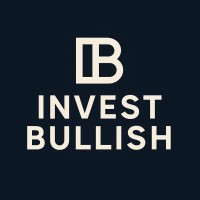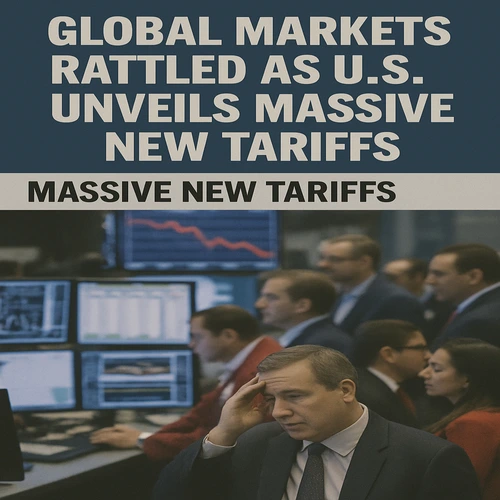U.S. Unleashes Trade Shock
On August 1, 2025, President Trump issued a sweeping executive order imposing new tariffs of 10% to 41% on imports from 69 countries, including major partners like Canada (35%), Brazil (50%), India (25%), Taiwan (20%), and Switzerland (39%). The move raised the effective U.S. tariff rate from around 2.3% last year to approximately 18% today. This marks the most aggressive U.S. trade policy since the 1930s.AP News+8Reuters+8Reuters+8
2. Market Reaction: Global Sell-Off Accelerates
Equity markets across the world suffered sharp declines, amplified by a weak U.S. jobs report (only 73,000 jobs added in July) and declining labor data credibility following the firing of the BLS head.The Guardian+8Reuters+8The Wall Street Journal+8
- U.S. Indices:
- S&P 500: –1.6%
- Dow: –1.2%
- Nasdaq: –2.2%
- Global & Regional Markets:
- MSCI ACWI: –1.3%
- STOXX 600: –1.9%
- KOSPI (South Korea): –3.9%
- Taiwan Index: –1.6%
- DAX / CAC 40: –2.7% / –2.9%WikipediaABC News+1The Wall Street Journal+1Yahoo Finance+3The Wall Street Journal+3AP News+3AP News+16abc Philadelphia+16abc Philadelphia+13Reuters+13CNA+13KSL+3Reuters+3Reuters+3Reuters
Safe-haven assets (gold) and U.S. Treasuries rallied sharply. Bond yields plunged—10-year yield dropped ~14 bps while the VIX volatility index jumped ~22%.Reuters+15AP News+15Reuters+15
3. Sector Sentiment: Few Winners Beyond Safe Havens
Consumer staples and healthcare initially showed resilience, but broad uncertainty weighed on industrials, tech, and export-heavy sectors. China and other trade partners condemned the tariffs, while businesses criticized unclear rules and complex carve-outs.aljazeera.compolitico.com
Pharmaceutical stocks briefly rose on safe-haven flows and talk of price control policies but subsequently fell as policy specifics emerged.economictimes.indiatimes.com
4. Deep Dive: Taiwan Semiconductor Manufacturing Co. (TSMC)
Ticker: NYSE: TSM / TPE: 2330
TSMC played a central role in this trade drama, as Taiwan was hit with a 20% tariff rate—one of the highest among Asia trade partners. Given TSMC’s importance in global chip supply chains, the move triggered investor concern over future access and costs.ReutersReuters
Key Metrics (latest available quarter):
- Market Cap: ~$700B
- Revenue (TTM): ~$75B
- Net Margin: ~35%
- Free Cash Flow Yield: ~5%
- Debt/Equity: ~0.05
Given that over 70% of its wafer volumes are exported to the U.S., TSMC could confront material cost disruptions if tariffs are not renegotiated or carved out. Small-layer adjustments or exemptions may offer relief—but the situation remains highly uncertain.
5. Strategic Implications & Playing Arsenal
Short-Term: Risk aversion dominates. Investors reducing exposure to global exporters where tariffs are highest (e.g., Taiwanese semis, Swiss luxury, Indian IT / machinery).
Mid-Term: Watch for trade negotiations with affected countries like Taiwan and Brazil. Markets may price in gradual resolution—or prolonged uncertainty.
Long-Term: Companies with onshored supply chains or established U.S. local operations may emerge stronger. AI, biotech, and domestic manufacturing names may benefit mechanically as U.S. industrial resilience becomes a policy priority.
6. Forward Risk Scenarios
| Scenario | Global Market Impact | TSMC Stock Outlook |
|---|---|---|
| Bull (Deals + Clarifications) | Markets stabilize; confidence returns | $95–105 (if carve-out negotiated) |
| Base (Partial deals, slow resolution) | Modest 5–10% correction; choppy recovery | $85–95 range |
| Bear (No deals, tariffs enforced) | Extended risk-off; global indices down 10–15% | $75–80 range (exports margin compression) |
7. Conclusion: A Trade Shock That Reverberates
The latest U.S. trade action restructures global trade dynamics overnight. With tariffs affecting 69 nations—some tied to critical supply chains—market volatility is likely to persist. TSMC and other export-dependent corporations stand at the frontline, while domestic resilience plays may win investor preference.
Looking ahead: key developments to monitor include early-state negotiations (Taiwan, India), Fed rate guidance shifts tied to inflation and hiring, and earnings commentary on margin pressures.

